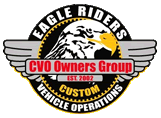I see that you have something to read above for a better understanding.
A Dyno is just a measuring tool. It is best used to determine if changes made to the engine were beneficial and in what way. As in doing a 'before' set of runs to establish a baseline, and doing runs after changes are made to see what the differences are. The only way to get accurate before and after is on the same dyno with the same corrections and smoothing. The exhaust can be 'sniffed' by the machine to allow the operator to tune the engine to an optimal mixture of air and fuel.
Horsepower is a calculation from the torque. HP = (Tq x RPM) / 5252 (this is why the HP and TQ graphs cross at 5252 RPM).
Let's look at this one:

Smoothing is at max of 5. The graph is SAE (corrected for weather/elevation).
The torque line starts at 100 ft-lbs @ 2650 RPM, ramps up quickly to 120 ft-lbs @ 2950.... and it's still making over 120 ft-lbs @ 5252 RPM. Nice torque for a cruiser/bagger/dresser. The HP graph is a nice diagonal line... but you can see that the HP is probably still building at the 5500 RPM rev limit. This engine would benefit from extending the rev limiter out to 6000+. Theres probably another 4 or 5 HP up there if it would rev out.
Here's another:

SAE correction, smoothing at 4 so the lines are a bit more jagged. This motor kinda lays there until around 3200 RPM where the torque ramps up. Needs exhaust restriction to flatten out/fill-in that dip down low.
The dyno is only as good as the operator. Dyno tuning is an art, and what you need is an artist.
 Author
Topic: Deciphering Dyno Numbers? (Read 12363 times)
Author
Topic: Deciphering Dyno Numbers? (Read 12363 times)

